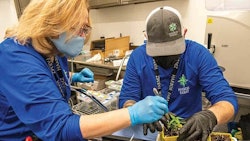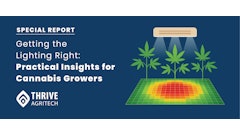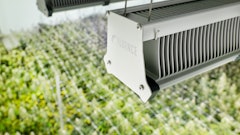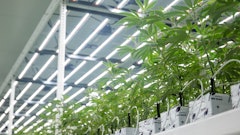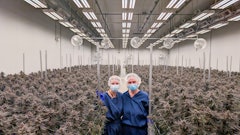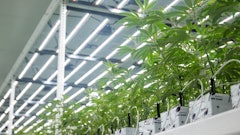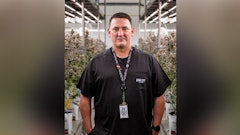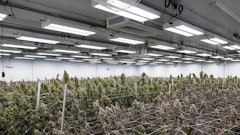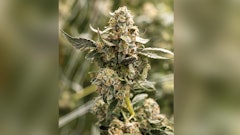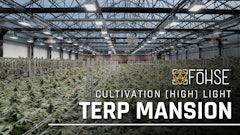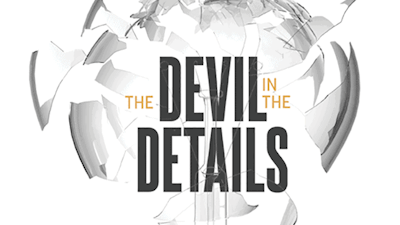

Good policy can have unintended consequences. Bad policy can be disastrous. That is why it is crucial that the cannabis industry take its time adjudicating on some of the most contentious issues in the space today.
I suspect that the enacting and enforcement of laws regarding the four issues explored in this article will have unintended consequences in the future.
To be clear, it’s not that I disagree with progress or some of the more popular positions, but I believe there will be a flurry of unexpected results from these proposals. Given the billions of dollars in cannabis tax revenues at stake, it is not unreasonable to ask that they be thoroughly thought out and studied prior to enforcement.
1. Eliminating/limiting supplemental CO2 use
Some regulators and policymakers have a misconception that CO2 is solely a gas that is bad for the environment and causes a hole in the ozone. While it is fact that CO2 is a greenhouse gas, their assumptions are somewhat incorrect in that CO2 also is not necessarily bad for the environment. For example, plants utilize CO2, along with light, to make food through a process called photosynthesis in order to produce biomass. Indoor and greenhouse plants can grow up to 20% faster with CO2 enrichment.
Additionally, the liquefied bottled CO2 is often recycled directly from other industrial processes, like the burning of fossil fuels, thus reducing those industries’ carbon footprint. A portion of the CO2 released into the growing environment gets “trapped” in the vegetation in the form of carbon, while the rest is ventilated back to the environment.
However, I was surprised to learn that most of the carbon footprint that comes from CO2 enrichment in horticulture is not from the release of the CO2 itself, but rather from its capture, compression into a liquid form, and its subsequent bottling. According to a 2018 study on carbon capture and storage efficiency, compression of CO2 is expected to consume 90 to 120 kilowatt-hours of energy (kWhe) per ton of CO2. Depending on the source of that energy, the carbon footprint of compressing and bottling CO2 can vary widely.
It is this reality that leads lawmakers to consider outlawing the utilization of CO2 enrichment for plant production in an indoor or greenhouse environment. But I have to question the logic of the decision.
If I am an indoor or greenhouse grower prevented from utilizing CO2 to accelerate growth, I will seek alternative routes to achieve my goal. One potential alternative is to increase the amount and duration of my ventilation cycles exponentially so that my growing environment CO2 levels are always at available atmospheric levels. This would lead to all ventilation in the facility being dramatically increased, which in turn leads to an increase in power consumption, as well as an increase in UV sterilizer and filter maintenance and all associated equipment costs.
So, is using CO2 gas better than increasing the frequency of ventilation and filtration maintenance? Which is most sustainable long term? Which has a smaller carbon footprint? Were these aspects examined prior to proposing these policies? What is the actual cause and effect?
2. LED mandate/California energy cap
A proposal the California State Energy Commission is evaluating would require all indoor growers to utilize only lights with “photosynthetic photon efficacy (PPE) of up to 2.1 micromoles per joule (µMol/J) for plant growth and maintenance in indoor growing facilities with more than 40 kW of total connected horticultural lighting load and a minimum PPE of 1.7 µMol/J in greenhouses with more than 40 kW of total connected horticultural lighting load” by 2023.
This proposal has many indoor and greenhouse cultivators in the state concerned. If the top limit of 2.1 µMol/J is adopted as the standard, it could cause California cannabis growers who use high-intensity discharge (HID) lights such as metal halide (MH) or high-pressure sodium (HPS) to incur additional costs (proportional to grow size) by forcing them to switch to more efficient lighting such as light emitting diodes (LEDs), the only lighting fixtures to meet the proposed metrics. LEDs often carry a higher upfront cost than HIDs, although operating costs for LEDs generally are less than those for HIDs.
Beyond the upfront costs, many indoor and greenhouse growers simply prefer to utilize HID lighting over LEDs due to their familiarity with the legacy technologies, or because most HID fixtures are smaller than LED fixtures. For greenhouse growers using LEDs, using larger fixtures means less natural light meets the canopy, thus increasing the need for supplemental lighting. In a May 2018 report, the Lighting Research Center (LRC) at Rensselaer Polytechnic Institute found that "the shading from LED luminaires reduces daylight in a greenhouse by 13% to 55% compared with a 5% reduction in daylight from HPS luminaires."
While it is true that LED adoption is growing, and I suspect as LED further evolves and technology progresses that LED technology will eclipse HID, I also suspect growers will always utilize what works best or strive to get the best they can afford.
Additionally, as more and more efficient greenhouses begin to produce cannabis on a larger scale, indoor cannabis production likely will begin to dwindle, and if interstate commerce is ever allowed, I suspect it will be very difficult for indoor facilities to compete with producers shipping low-cost cannabis anywhere in the U.S. without those indoor growers figuring out ways to reduce their production costs. There’s no need to mandate LED use when market forces will lead to their natural adoption.
3. Banning/outlawing Delta-8 and Delta-10
Research has found that a cannabis plant is capable of producing 60-plus cannabinoids and approximately 400 total compounds. Some of these compounds, like delta-8 and delta-10 THC, are produced naturally only in trace amounts, but can be converted in greater amounts in a lab from more prominent compounds. These alternative cannabinoids fall into a legal gray area, with some claiming they do not fall under the purview of the Controlled Substances Act (CSA) or state cannabis jurisdiction, with many hemp farmers, especially, exploiting the loophole in many markets.
In response, more than 15 states have or are in the process of banning hemp-derived THC isomers such as delta-8 and delta-10 in foods, drinks, vape cartridges, dietary supplements, and cosmetics.
Hemp-derived delta-8 has been outlawed in Colorado, which banned all “lab-created hemp products.” A May 14 notice from Colorado’s Marijuana Enforcement Division (MED) stated that “chemically modifying or converting any naturally occurring cannabinoids from industrial hemp is non-compliant with the statutory definition of ‘industrial hemp product.’ This includes any process that converts an industrial hemp cannabinoid, such as CBD isolate, into … tetrahydrocannabinol isomers or functional analogs.”
The motivation behind the ban was that “insufficient evidence exists whether or not any toxic or otherwise harmful substances are produced during these reactions and may remain ….”
Another letter further clarified that the only solvents allowed in the cannabis extraction process are butane, propane, CO2, ethanol, isopropanol, acetone, heptane, ethyl acetate, and pentane. And using “acids bases, catalysts, or other unimproved reagents to extract, isolate or convert cannabinols, tetrahydrocannabinols, or other cannabinoids is not permitted.” (Emphasis in original.)
Regulators in Kentucky, Michigan, North Dakota, Texas, Vermont and Washington state also have banned, or are considering legislation to ban, hemp-derived THC isomers.
It must be noted that neither delta-8 nor delta-10 THC are specifically outlawed by the CSA, and the cannabinoids are essentially created by converting hemp-derived CBD (legal under the CSA) into THC.
A ban on all alternative cannabinoids prevents their study. With more than 400 different chemical compounds possibly present in cannabis, it is a disservice to simply place a blanketed ban on all converted cannabinoid isolates. Doing so risks possibly overlooking a medically beneficial compound or derivative, which could help hundreds, thousands, or millions of people.
4. Potency caps on flower and/or concentrates
Washington state's House Bill 1463, introduced in February, would ban all concentrates with more than 30% THC. The reason? The bill’s title sums it up nicely: “Addressing serious mental health consequences of high-potency cannabis products by regulating the sale of cannabis concentrates.”
But Washington isn’t alone. Many states either have or intend to impose a THC limitation on cannabis products sold and made in their jurisdictions. In Florida, for example, a bill proposed earlier this year sought to limit flower at 10% THC and concentrates at 60%. In Massachusetts, legislators circulated a bill that would put a 10% THC cap for flower and to ban vape cartridges that exceed 10% THC.
Any mandate limiting THC percentages in inhalable products could lead cannabis and concentrate consumers to transition back to the unregulated market to purchase high-THC products. This would cost the state(s) millions of dollars in tax revenue, and increase the costs of enforcement against an illicit market that will be stronger than ever.
While there are many researchers investigating conditions such as Cannabis Hyperemesis Syndrome (CHS) and the impacts and risks of prolonged abuse of high-potency cannabis on the mental health and psychosis of teens and young adults especially, just as in the case of alcohol, we cannot simply ban products because a small portion of the population would have an adverse reaction to it.
It’s all about personal choice and common sense, really. We don’t need any more bad laws on the books.








